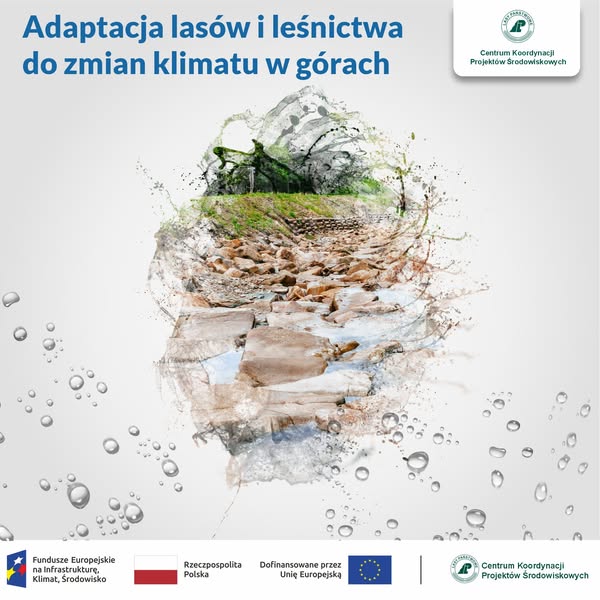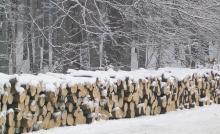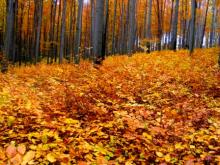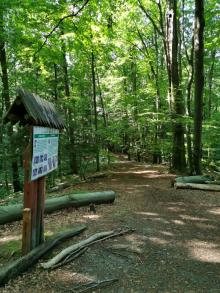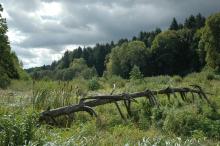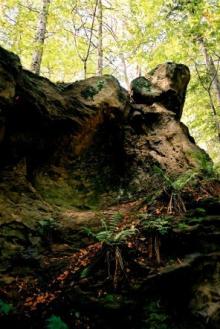 Asset Publisher
Asset Publisher
Polish forests
Poland is in the European lead, while concerning the area of all forests. They cover about 29,2 % of the country territory, and grow within the area of 9,1 million hectares. The overwhelming majority of the forests is state owned, of which almost 7,6 million hectares are managed by the State Forests National Forest Holding..
The number of Polish forest is still growing. The forestation rate of the country has increased from 21 % in 1945 to 29,2 % at the moment. Between 1995 and 2008, the forest area increased by 310 thousand ha. The basis for afforestation works is the "National Programme for Increasing the Forest Cover" (KPZL), assuming an increase of the forestation rate up to 30 % by 2020 and up to 33 % by 2050. Polish forests abound in flora, fauna and fungi. 65 % of the total number of animal species live there.
The forests grow in our country on poor soils, mainly because of the development of the agriculture in previous years. It influences the distribution of the types of the forest sites in Poland. Over 55 % of the forest areas is covered with coniferous forests. In other areas, there are forest sites, mainly the mixed ones. Their small part constitute alder and riparian forests – not more than 3 %.
In the years 1945 – 2011 the area of natural deciduous tree stands within the area of the State Forests National Forest Holding increased from 13 to 28,2 %.
Within the lowlands and uplands the most often occurring tee species is pine. It covers 64,3 % of the forest area of the State Forests National Forest Holding and 57,7 % of private and commune forests. In the mountains the predominant species is European spruce ( in the west) and European spruce with beech (in the east). Domination of pine is the result of carrying on sustainable forest management in the past. Once, the monocultures (crops or cultivations of one species) were the answer to the great demand of industry for wood. Such forests appeared to be quite fragile to climatic factors. They also were often the prey of pests' expansion.
In Polish forests, the share of other tree species, especially deciduous trees have been systematically increasing. The foresters have stepped aside from monocultures – that is why, they try to fit specific species of the forest stand to the natural stand, that would be proper for the given area. Thanks to that, in the years 1945 – 2011, the area of the deciduous tree stands within the lands of the State Forests National Forest Holding increased from 13 to 28,2 %. There occur more and more frequently the following tree species: oaks, ashes, maples, sycamore maples, elms, but also birches, beeches, alders, poplars, hornbeams, aspens, tilias and willows.
Our forests are the most often represented by the forest stands aged 40 to 80 years. The average age of the forest equals 60 years. More and more trees are of big size at the age over 80 years. Since the end of the Second World War, the forests' area has increased up to almost 1,85 million hectares.
Raport o stanie lasów w Polsce 2012
 Asset Publisher
Asset Publisher
Projekt adaptacji do zmian klimatu na terenach górskich - kontynuacja
Projekt adaptacji do zmian klimatu na terenach górskich - kontynuacja
Kompleksowy projekt adaptacji lasów i leśnictwa do zmian klimatu – mała retencja oraz przeciwdziałanie erozji wodnej na terenach górskich – kontynuacja (MRG3)
Podmioty realizujące projekt:
- Beneficjent: Państwowe Gospodarstwo Leśne Lasy Państwowe reprezentowane przez CKPŚ
- 42 nadleśnictwa z terenu RDLP Kraków, RDLP Katowice, RDLP Wrocław, RDLP Krosno
- Partnerzy projektu: Uniwersytet Przyrodniczy w Poznaniu, Uniwersytet im. Adama Mickiewicza w Poznaniu, Centrum Ochrony Mokradeł
Okres realizacji:
2024-2028
Cel główny projektu:
Wzmocnienie odporności górskich ekosystemów leśnych na zagrożenia związane ze zmianami klimatu poprzez realizację do końca 2028 r. kompleksowych działań retencyjnych i przeciwerozyjnych ukierunkowanych na zapobieganie powstawaniu lub minimalizację negatywnych skutków naturalnych zjawisk/procesów klimatycznych takich jak susze i pożary, powodzie i podtopienia, intensywne lub długotrwałe opady atmosferyczne, ekstremalne przepływy wód w korytach, spływy powierzchniowe, niszczące działanie wód wezbraniowych.
Cele szczegółowe:
- Rozwój systemów małej retencji poprzez wykonanie obiektów i kompleksowych zadań gromadzących wodę do końca 2028 r.
- Rozwój systemów związanych z przeciwdziałaniem zbyt intensywnym spływom powodującym nadmierną erozję wodną na terenach górskich poprzez wykonanie obiektów do końca 2028 r.
W Projekcie wyznaczono również dodatkowe cele związane z działaniami edukacyjnymi oraz monitoringiem tj.:
- Wzrost wiedzy nt. wpływu małej retencji wodnej na środowisko poprzez opracowanie metodologii oceny wpływu na podstawie monitoringu środowiska wybranych zadań do 2028 r.
- Zwiększenie efektywności działań w zakresie adaptacji do zmian klimatu poprzez opracowanie dobrych praktyk realizacji działań retencyjnych do końca roku 2028.
- Podniesienie świadomości ekologicznej społeczeństwa poprzez realizację wydarzeń edukacyjnych dla min. 500 uczestników do końca 2028 r.
Planowane działania:
W ramach projektu będą realizowane inwestycje łączące przyjazne środowisku metody techniczne i biotechniczne, m.in. związane z:
- budową, przebudową lub odbudową zbiorników małej retencji i zbiorników suchych;
- budową, przebudową lub odbudową małych urządzeń piętrzących (zastawki, małe progi, przetamowania) na kanałach i rowach w celu spowolnienia odpływu wód powierzchniowych, przywracania funkcji obszarów mokradłowych i ich ochrony oraz odtwarzanie terenów zalewowych;
- budową, przebudową lub odbudową niedostosowanych do wód wezbraniowych obiektów hydrotechnicznych (mostów, przepustów, brodów);
- zabudową przeciwerozyjną dróg, szlaków zrywkowych oraz zabezpieczeniem obiektów infrastruktury leśnej przed skutkami nadmiernej erozji wodnej związanej z gwałtownymi opadami (m.in. wodospusty, płotki drewniane, dylowanki, kaszyce, narzut kamienny).
Projekt stanowi kontynuację działań realizowanych przez Lasy Państwowe w ramach projektów współfinansowanych z Programu Operacyjnego Infrastruktura i Środowisko 2007-2013 i 2014-2020.
Planowane rezultaty projektu:
W projekcie planuje się wykonanie łącznie 628 sztuk obiektów i kompleksowych zadań (wskaźnik produktu), osiągnięcie pojemności obiektów małej retencji o wartości 358 tys. m3 (wskaźnik produktu) oraz osiągnięcie objętości obiektów małej retencji w wartości 280 tys. m3 (wskaźnik rezultatu).
Planowana wartość projektu:
- Całkowity koszt realizacji projektu: 302 880 000 zł
- Kwota wydatków kwalifikowalnych: 239 200 000 zł
- Kwota dofinansowania z UE: 190 666 320 zł
Na terenie Nadleśnictwa Strzyżów planowane są:
Budowa komlpleksu kaskadowych zbiorników retencyjnych na terenie Leśnictwa Sołonka
Budowa komlpleksu kaskadowych zbiorników retencyjnych na terenie Leśnictwa Łączki
Budowa przepustu na terenie Leśnictwa Sołonka
Łącznie plan 6 300 000 zł


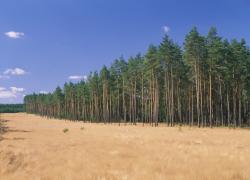 fot. Paweł Fabijański
fot. Paweł Fabijański
 fot. Paweł Fabijański
fot. Paweł Fabijański
 fot. Paweł Fabijański
fot. Paweł Fabijański

